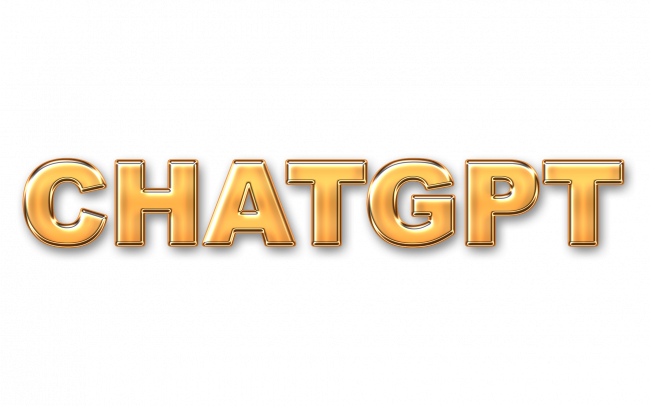ChatGPT is an AI language model that is revolutionizing the way we communicate online. It uses state-of-the-art technology and algorithms to understand and generate human-like language, making it an incredibly powerful tool for businesses and individuals alike. However, many people are still unfamiliar with the technology behind ChatGPT and how it works. In this article, we will explore the intricacies of ChatGPT, its applications, and its impact on the future of communication.
What is ChatGPT?
ChatGPT is a generative language model that uses deep learning techniques to generate natural language text. Unlike other language models that rely on a set of pre-defined rules and responses, ChatGPT uses machine learning to generate responses based on a given input. The technology behind ChatGPT is complex, but the basic idea is that it learns from millions of conversations to generate human-like responses to a given input.
How ChatGPT Works
ChatGPT works by using a combination of pre-training and fine-tuning to generate natural language text. Pre-training involves training the model on massive amounts of data to create a base understanding of language. Fine-tuning involves training the model on specific tasks or domains to improve its performance. During both pre-training and fine-tuning, the model uses deep learning techniques, such as neural networks and attention mechanisms, to learn patterns and generate human-like language.
Applications of ChatGPT
ChatGPT has a wide range of applications in various industries, including customer service, healthcare, and education. In customer service, ChatGPT can be used to generate responses to customer inquiries and complaints, making the process more efficient and effective. In healthcare, ChatGPT can be used to generate diagnoses and treatment recommendations based on patient symptoms. In education, ChatGPT can be used to generate interactive and personalized learning experiences for students.
ChatGPT's Capabilities and Limitations
ChatGPT's capabilities are impressive, and it can generate human-like responses to a given input. However, it also has its limitations. For example, ChatGPT's responses may not always be accurate, and it may struggle to understand the nuances of human language. Additionally, ChatGPT's responses may be biased due to the data it was trained on.
ChatGPT's Impact on the Future of Communication
ChatGPT is shaping the future of human-machine interactions and is changing the way we communicate online. It has the potential to improve communication efficiency and accuracy, making it a valuable tool for businesses and individuals alike. However, the rise of AI language models like ChatGPT also raises ethical concerns, such as data privacy and bias.

Ethical Considerations of ChatGPT
As with any technology, ChatGPT raises ethical concerns that must be addressed. One of the main concerns is data privacy, as ChatGPT relies on large amounts of user data to generate responses. Additionally, ChatGPT's responses may be biased due to the data it was trained on, which raises questions about fairness and inclusivity.
Advancements in ChatGPT Technology
The technology behind ChatGPT is constantly evolving, and recent advancements have made it even more powerful. For example, recent research has shown that ChatGPT can generate responses that are almost indistinguishable from human responses. Additionally, new techniques, such as zero-shot learning and few-shot learning, are being developed to improve ChatGPT's performance.
ChatGPT and Other Language Models
While ChatGPT is an impressive language model, it is not the only one available. Other language models, such as GPT-2 and BERT, have their own strengths and weaknesses. For example, GPT-2 is known for its ability to generate longer text passages, while BERT is better at understanding the context of a given input. As the field of natural language processing continues to evolve, we can expect to see even more advancements in language models like ChatGPT.
ChatGPT Error in Body Stream
While ChatGPT is a powerful tool, it is not infallible. There are instances where it can make errors or generate inappropriate responses. One example of this is the "toxicity" problem, where ChatGPT may generate inappropriate or offensive language due to the data it was trained on. To combat this, researchers are developing new techniques to reduce the risk of inappropriate responses, such as using bias mitigation strategies and filtering mechanisms.
Comparison of ChatGPT to Other AI-Language Models
Compared to other AI language models, ChatGPT is known for its ability to generate natural-sounding text that is similar to how humans speak. This makes it ideal for applications where a chatbot or virtual assistant needs to have conversations with humans.
One major advantage of ChatGPT is its ability to generate longer text passages than other models like BERT. However, it may not perform as well when it comes to understanding the context of a given input. For example, it may struggle to understand sarcasm or irony, which could result in inappropriate responses.
Limitations of ChatGPT
While ChatGPT is a powerful tool for generating human-like language, it is not without its limitations. One of the biggest challenges is ensuring that it is not biased in its responses. This is because ChatGPT is trained on large amounts of data, some of which may contain inherent biases based on factors such as race or gender. To combat this, researchers are developing techniques to reduce bias in the training data and algorithms used to process it.
Another limitation of ChatGPT is its potential for generating inappropriate or offensive language. This is known as the "toxicity" problem and is a significant concern in applications such as chatbots and social media platforms. Researchers are working on ways to mitigate this risk by implementing filtering mechanisms and bias mitigation strategies.
ChatGPT's Role in the Future of AI
As one of the most advanced AI language models to date, ChatGPT is shaping the future of AI and machine learning. Its ability to generate human-like language opens up a wide range of possibilities for businesses and individuals alike.
One potential application is the development of chatbots and virtual assistants that can have natural, human-like conversations with customers. This could revolutionize the way we interact with technology, making it easier and more intuitive to use.
Another potential application is in the development of language translation tools that can translate text from one language to another in real time. This could be a game-changer for businesses operating in global markets and could help break down language barriers around the world.
Conclusion
ChatGPT is an AI language model that is transforming the way we communicate online. Its ability to generate human-like language makes it a powerful tool for businesses and individuals alike. However, we must also be aware of the ethical concerns surrounding AI language models like ChatGPT, such as data privacy and bias. As the technology behind ChatGPT continues to evolve, we can expect to see even more exciting advancements in the field of natural language processing.















